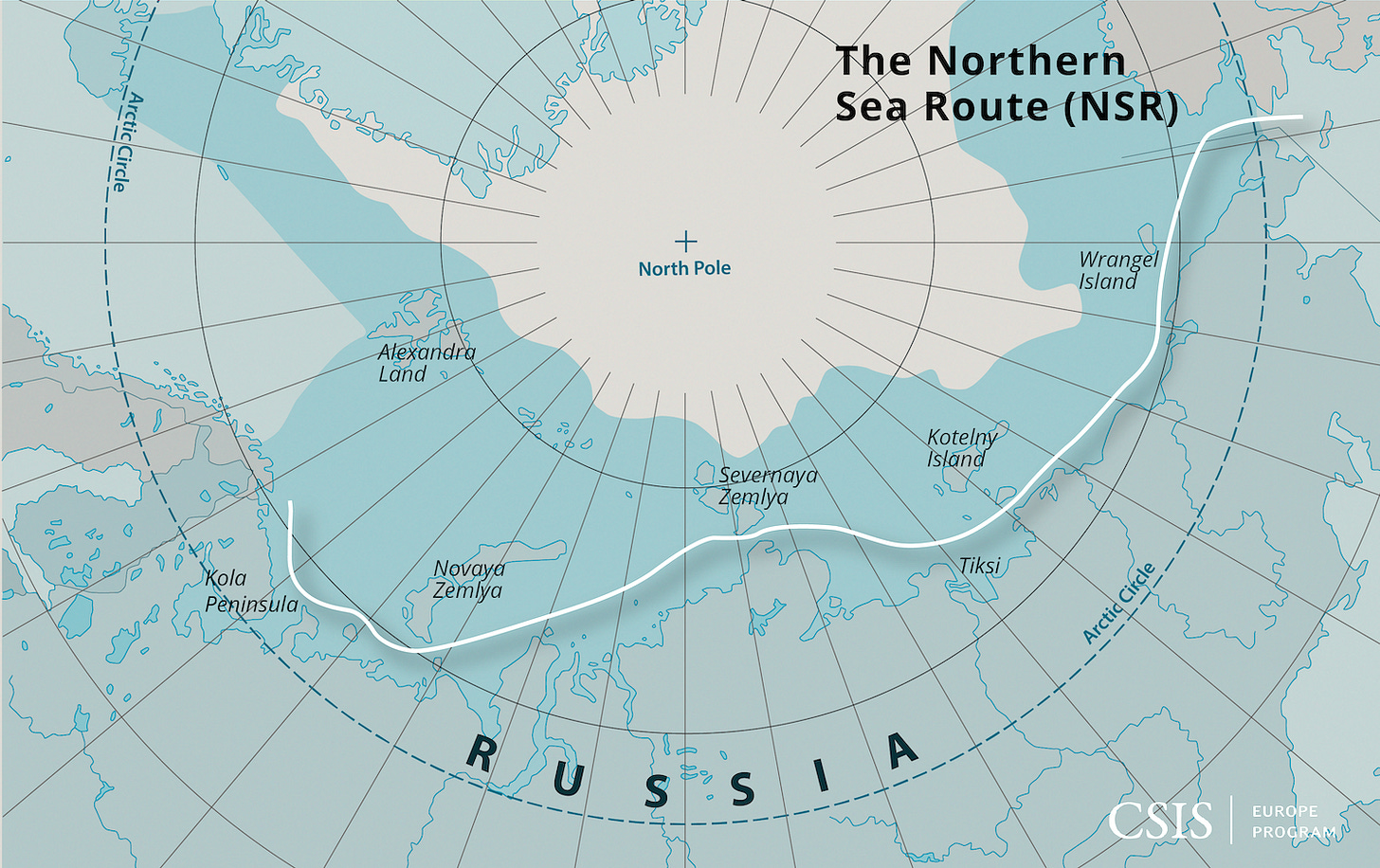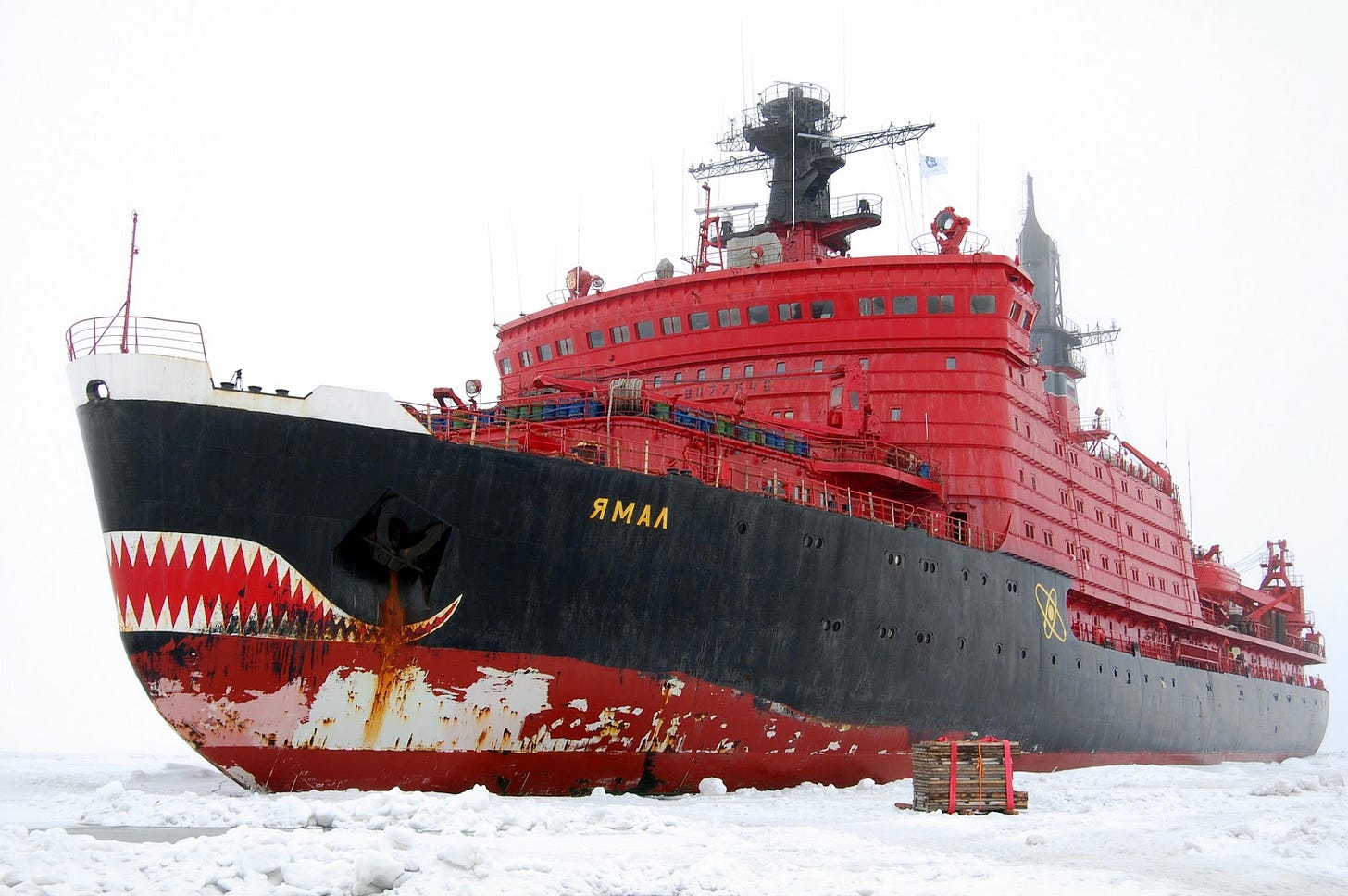Why is this interesting? - The Russian Arctic Edition
On the polar ice cap, global warming, and strategic interests
Rebeka Foley (RF) analyzes politics and energy markets in Russia, the Caucasus, and Central Asia for London-based PRISM Political Risk Management. She previously worked in oil markets at IHS Markit and at the think tank Freedom House in New York, as well as in media. She has lived in Paris for many years and also studied in St. Petersburg, Russia, where she became a big fan of borscht.
Rebeka here. Climate activists dread the melting of the Arctic. But for the Russian government, it’s a godsend. As global warming thaws polar ice caps, the Arctic has become a new frontier for Russian military and economic expansion. Russia borders over half of the world’s Arctic coastline and a quarter of its landmass sits in Arctic territory, which, besides requiring a good parka, also holds vast untapped natural resources. The loss of ice in the Arctic, which is heating up twice as fast as anywhere else in the world, will also clear new trade routes that Russia is keen to exploit. As climate concerns capture headlines, the Arctic will also become the center stage for Russian geopolitics, energy, and trade.
Why is this interesting?
Just as outer space stretched the borders of interstate rivalry in the 1960s, the Arctic presents a new arena for global powers to compete. There are five countries with legal rights to Arctic waters: the US, Russia, Norway, Canada, and Denmark (through Greenland). Russia is best placed to become a “polar power”—and not only because it fixed a titanium Russian flag on the seabed of the North pole in 2007. Moscow’s grandiose 2035 Arctic strategy has led to more Russian advancement in the region than any of its Arctic counterparts.
Russia has a few key goals in the Arctic. First, it is eager to exploit the energy reserves, a zeal that became further apparent this year with ongoing investments in the Russian Far North despite economic fallout and the oil price slump. Arctic oil and gas projects are costly and complex, and the state offers huge tax breaks for energy companies operating in the region to cushion the impact and push plans forward. Russia’s Arctic land has more oil and gas than other nations with an Arctic foothold, enough to increase the country’s oil reserves by at least 50%, according to some estimates.

In parallel, the melting of polar ice caps will open trade circuits above Russia to export these newfound reserves, another pillar of the country’s Arctic strategy. A new international transport corridor, known as the Northern Sea Route, will clear in Russia’s Arctic waters as the ice thaws, allowing unprecedented shipping routes across the world at record speeds. The Northern Sea Route is the fastest connection over water between Northern Europe and Southeast Asia and sits completely within Russia’s economic jurisdiction. Ice currently blocks much of the way, but Russia has the world’s largest fleet of icebreakers (massive ships that cut through ice, not just good jokes at cocktail parties) and is working to build the most powerful icebreaker ever in existence. Its control over the economic rules along the route as well as its fleet will give it unrivaled sway in the region.

Russia’s ‘Yamal’ nuclear-powered icebreaker, with teeth painted on the front
Finally, Russia sees the Arctic as a domain for defense. Alongside the economic potential of the Northern Sea Route, it militarized the corridor by reopening fifty Soviet army posts along the way, which include air bases, radar stations, and border outposts. In addition to enhanced training of its Northern Fleet, a division of the Russian navy dedicated to the Arctic, it acquired a robust supply of defense equipment, much of which caters to the Far North’s harsh climate. By the end of 2020, the Arctic will receive a nuclear-powered ballistic missile submarine as well as four large warships and submarines. The state is also funding research to have Arctic UAVs replace helicopters. The military buildup led Russian Defense Minister to say in February that “the Northern Sea Route is now under steady protection.”
Beyond the current main stage of geopolitics, a new frontier has emerged in the Arctic that will have key implications for global trade and politics. The question will be how the rest of the world responds. (RAF)
Album of the Day:
While we’ve obviously got an endless amount of love for electronic music, some days you just want to get back to 2003. As I was drinking my afternoon coffee yesterday I had fun Broken Social Scene’s You Forgot It In People, which absolutely holds up after all these years. For what it’s worth, the album review is also the first Pitchfork review that really sticks out in my mind. (NRB)

Quick links:
The engineering of flying snakes (CJN)
A great vintage United commercial h/t DJN (CJN)
Color video of 1913-1915 Japan via BP (CJN)
Thanks for reading,
Noah (NRB) & Colin (CJN) & Rebeka (RAF)
—
Why is this interesting? is a daily email from Noah Brier & Colin Nagy (and friends!) about interesting things. If you’ve enjoyed this edition, please consider forwarding it to a friend. If you’re reading it for the first time, consider subscribing (it’s free!).


